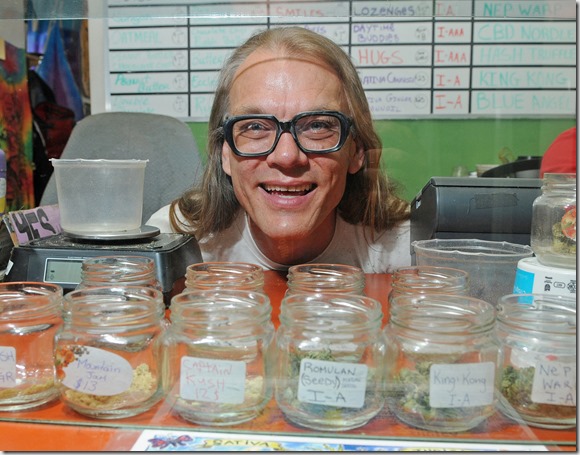By Owen Smith
Through failed attempts to manipulate cannabinoids or their partner receptor system in our body, pharmaceutical companies have learned some valuable lessons about the whole plant synergy of cannabis medicine. The complex chemistry of the cannabis plant is intimately connected to the complex processes and transformations that occur in our bodies’ endocannabinoid system (ECS), and it is through this complex relationship that comes the extensive list of medical treatments. Scientists have had to use the beer-goggles of prohibitive organizations such as N.I.D.A. to create drugs from the emerging knowledge of the ECS, and it’s gotten ugly.
The symbiotic relationship between our bodies and this plant presents a natural mystery that is confounding the methods of modern medicines makers. The intimacy of the ECS and our health should not be underestimated and, in some cases, tinkered with. Rimonabant was designed to block the CB1 receptor in an attempt to produce the “reverse munchies” effect. It was released in France as an appetite suppressant named Acomplia, only to be withdrawn from the market due to potentially serious side effects. It was rejected by the U.S. F.D.A. for causing anxiety, depression, and suicidal thoughts.
(Acomplia was rejected by the U.S. F.D.A. for causing anxiety, depression, and suicidal thoughts.)
Although drug company proponents contest that isolated pharmaceuticals are safer than raw herbs, the prohibition on the plant has created it’s own problems. In the past few years there has been a genesis of designer cannabinoid drugs that have made it onto the shelves of head shops and gas stations around the world. These compounds were formulated by Dr. John W. Huffman (JWH) in order to conduct experiments on human subjects without the use of plant derived cannabinoids. The research was funded exclusively by the National Institute of Drug Abuse whose narrow focus on “research to prevent and treat drug abuse and addiction”1 (source) callously blocks research into whole plant medicine. Dr. Huffman reports that the chemical blueprints of his compounds were stolen and are now being reproduced around the world. JWH has stated publicly that these compounds are unsafe, and reports are emerging of users involved in accidents related to its impairment.
(Spice and K2 are synthetic compounds marketed as ‘legal weed’)
“Spice” smoking blends like K-2 are made into “incense” by spraying JWH compounds soaked in acetone (nail polish remover) onto dried herbs like damiana. At about $420 an ounce, these products are labelled “not for human consumption,” yet are marketed as “Legal Weed,” sometimes causing anxiety and dizziness while offering no medical value. These synthetic constructs continue to run amuck, as the specific profile of these duplicate cannabinoids are unclassified by the law. “Many of these cannabinoids have been developed specifically so they’re not analogues of the other ones […] Theoretically there are thousands that could be developed.”2 (source)
In light of this, it seems like another backfire of prohibition that synthetic copies of individual compounds originally found in the cannabis plant are being widely distributed. Evidence continues to emerge in favour of whole plant medicine despite the narrowly focussed research approval standards of organizations like the N.I.D.A. that precipitated this legal loophole for opportunistic chemists.
While drug companies attempt to patent isolated compounds, patients are better off vaporizing whole plant cannabis for fast relief, eating medibles for a long sleep, or applying a massage oil to localize the effects. Cannabis dispensaries offer these options to patients at reduced cost, as they buy bulk ingredients and receive leaf donations from their caring growers.
Scientists have only been learning about cannabinoid receptors since 1988. The deeper they explore this complex system the more it reveals about cannabis and our health. As patients continue to inform doctors about how cannabis has helped them, scientists arduously attempt to target these previously untreatable conditions. However, today, it seems clear that the rigid approach afforded under prohibition can make a mess of even the purest intentions of science.
The few synthetic cannabinoid medicines we have available continue to fall short of the miraculous benefits attributed to whole plant products. The age old herb continues to help people heal in a myriad of ways, accumulating evidence that cannabis is indeed greater than the sum of its parts.
Read More from Owen Smith on the Cannabis Digest Blogs
1. www.nida.nih.gov/StrategicPlan/StratPlan10/Index.html
2. Designer drugs a cat-and-mouse game www.nzherald.co.nz/health/news/article.cfm?c_id=204&objectid=10738810







